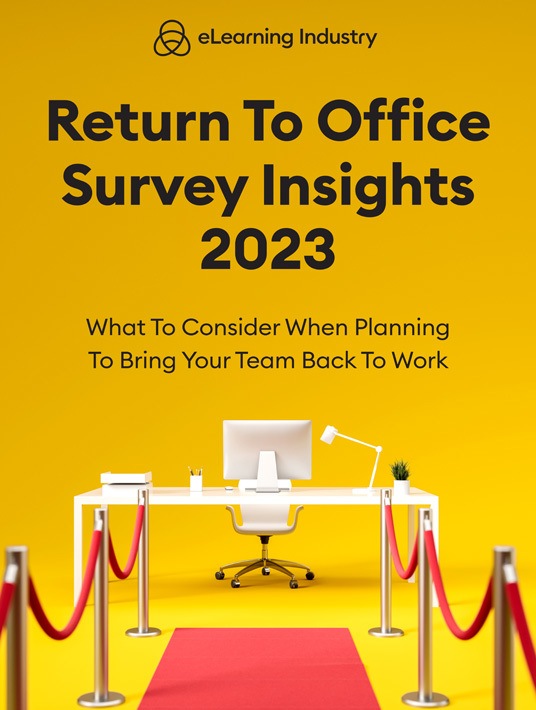The Rise Of Remote And Hybrid Work
With remote work and hybrid work becoming increasingly prevalent in today’s "new normal," workers are continually seeking out opportunities for remote or hybrid work. Remote and hybrid work arrangements have now become an extremely attractive benefit and are almost essential in attracting and retaining talent.
In fact, according to a survey from GoodHire, 68% of American workers prefer remote work over in-office work [1]. In addition, 61% percent would take a pay cut to be able to continue working remotely, and 45% percent would either quit or start looking for a remote position if forced to return to their office full-time.
Further findings show that 85% of these American workers would rather apply for jobs that offer the opportunity to work remotely, and only 15% would apply for a full-time, in-office position. Lastly, 74% believe that organizations that don't offer the opportunity to work remotely will fail to acquire, engage, and retain workforce talent [1].
Additional data also shows the widespread prevalence of remote and hybrid work arrangements. 70% of organizations said they planned to adopt the hybrid work model, according to a May 2021 study from Mercer [2]. A recent Gallup poll shows that 45% of full-time employees in the U.S. work from home, and 74% of professionals believe remote work will become the new standard [3]. As more and more organizations go remote, they must now address new challenges and concerns around one of the key factors for employee retention: a structured, exemplary onboarding process.

Remote Onboarding: Essential Considerations
A strategic, successful, and outstanding onboarding process is critical for employee retention and engagement at any organization, and the statistics show this. 69% of new employees are more likely to remain with an organization after three years if their onboarding experience was exemplary [4]. New employees who participate in an organized onboarding program are 58% more likely to be with the company after three years. A thorough onboarding process can also improve productivity by over 70%, according to research from Glassdoor.
Yet so many businesses fail to make a strong first impression on new team members, thus negatively affecting retention and costing these organizations extra time and money. Only 12% of employees strongly agree their company does a "great job" with onboarding, according to a Gallup poll [5]. Employee turnover can be as high as 50% in the initial 18 months of employment, according to the Society for Human Resource Management (SHRM) [6]. SHRM also estimates that, on average, it will cost a company six to nine months of an employee's salary to find, hire, and onboard someone to replace that employee [7].
Onboarding new employees is already difficult enough in a face-to-face, in-person office environment, but now companies are faced with the additional logistical challenge of effectively and efficiently onboarding employees with remote or hybrid work arrangements. However, there is a clear opportunity for companies to onboard, engage, and retain talent by leveraging a tried-and-true resource: eLearning.
eLearning: Definition, Advantages And Benefits
According to the Association for Talent Development, eLearning is "a structured course or learning experience delivered electronically. It can also include performance support content. There are also many different elements that can make up an e-learning program, such as live or pre-recorded lecture content, videos, quizzes, simulations, games, activities, and other interactive elements [8]."
The benefits and advantages of eLearning are quite apparent. According to a Brandon Hall Group study, eLearning typically takes 40% to 60% less employee time than learning in a traditional classroom setting [9]. And each penny spent on eLearning results in a $30 increase in output, according to a 2020 research report from Facts and Factors.
Additionally, 72% of firms state that eLearning helps them keep a competitive edge by staying up-to-date with technological change. 42% of businesses say eLearning has improved revenue, and eLearning increases retention rates by 25–60% [9].
eLearning For Onboarding: An Intuitive Solution
Given the abundantly clear benefits of eLearning, it stands to reason that custom eLearning videos can help organizations effectively and efficiently welcome and retain new hires. Custom eLearning content can be crafted and produced to communicate roles and responsibilities, establish expectations, convey and emphasize company culture, provide context and insight into the inner workings of the company, guide new hires through onboarding paperwork, and much more.
eLearning videos and modules designed specifically for onboarding provide a streamlined and standardized approach, while also allowing organizations to ensure that the onboarding material is being understood and retained adequately, through optional assessments and other interactive features. With the workforce continuing to seek out remote and hybrid work options, organizations would be wise to utilize custom eLearning content to onboard new employees, giving them a standardized and strategic entry point to the organization while also fostering engagement and employee retention.
References:
[1] The State Of Remote Work In 2021: A Survey Of The American Workforce
[2] Most US employers with flexible work plans choose hybrid work, Mercer says
[3] 5 Statistics Employers Need To Know About The Remote Workforce
[4] Don't Underestimate the Importance of Good Onboarding
[5] Why the Onboarding Experience is Key for Retention
[6] Onboarding New Employees: Maximizing Success
[7] High Turnover Costs Way More Than You Think
[9] Facts And Stats That Reveal The Power Of The eLearning Sector









